Here is a Google video of the final presentation of Design Northampton Week. It’s 2 hours and 5 minutes long. Notre Dame Professor Philip Bess and his graduate students offer urban design suggestions for Northampton, drawing on principles of New Urbanism and compact growth. This PDF file (63 pages, 5.8MB) contains all the slides shown. Selected slides are also reproduced below.
Northampton’s layout of buildings as it is today:
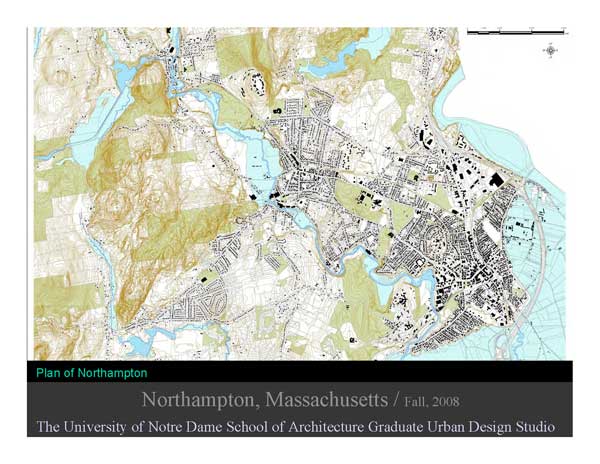
Our growth patterns before and after 1950:
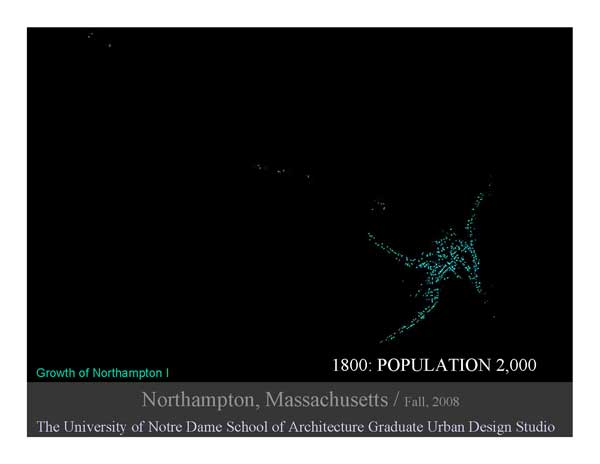
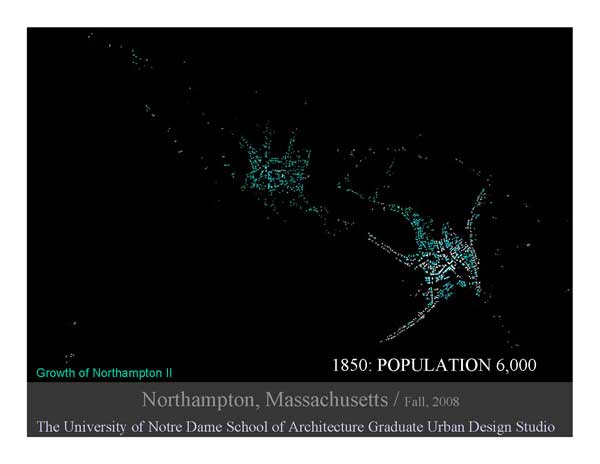
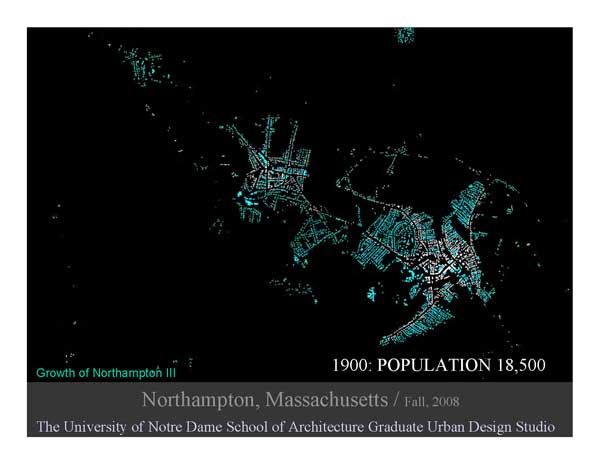
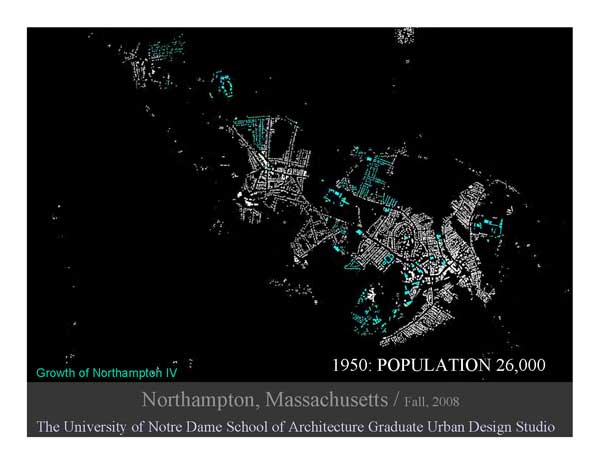
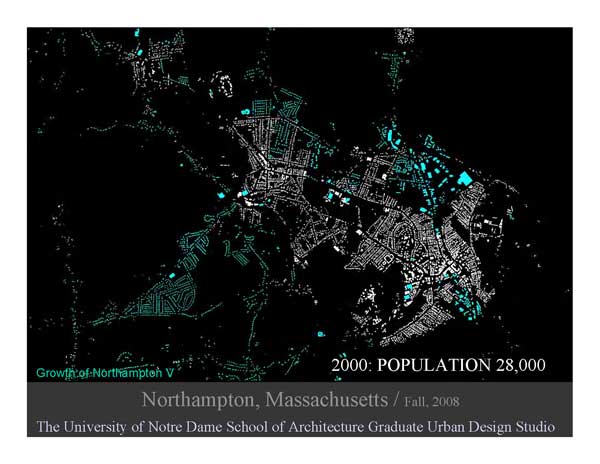
Transect-based zoning emphasizes density and building type rather than type of land use:
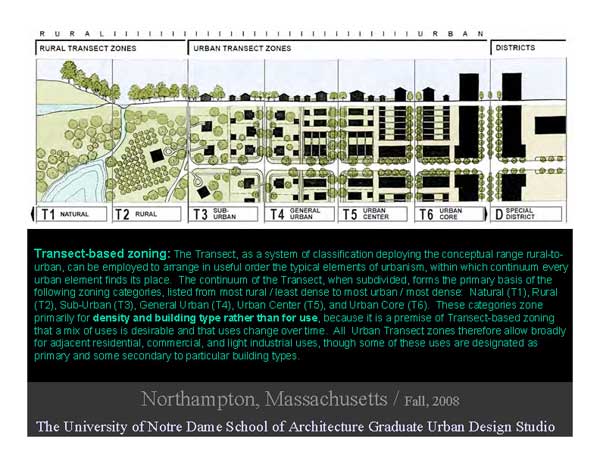
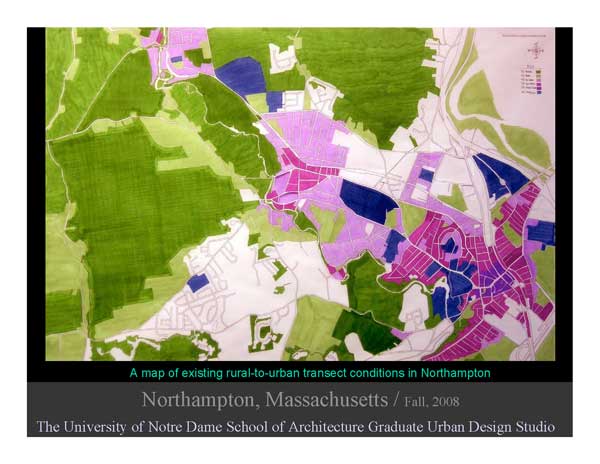
The Notre Dame team gave special attention to Florence Center, King Street, the central downtown area, Pleasant Street, and Hospital Hill (Village Hill):
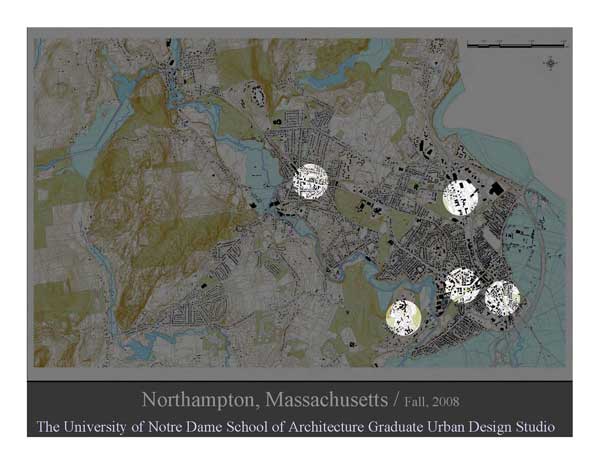
A pergola (shaded walk) is suggested for downtown Main Street to attract more pedestrians:
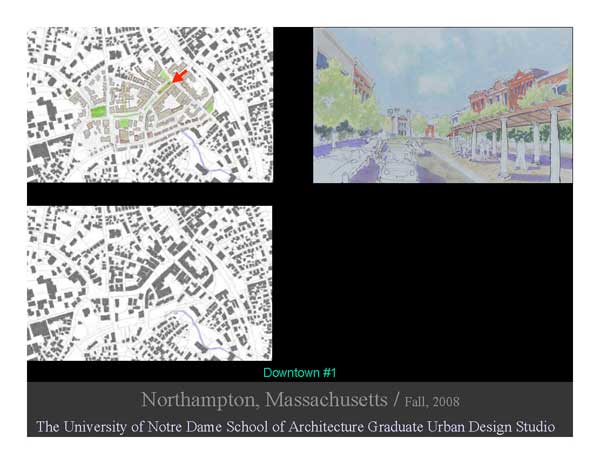
An alternate vision for Main Street, with wider sidewalks:
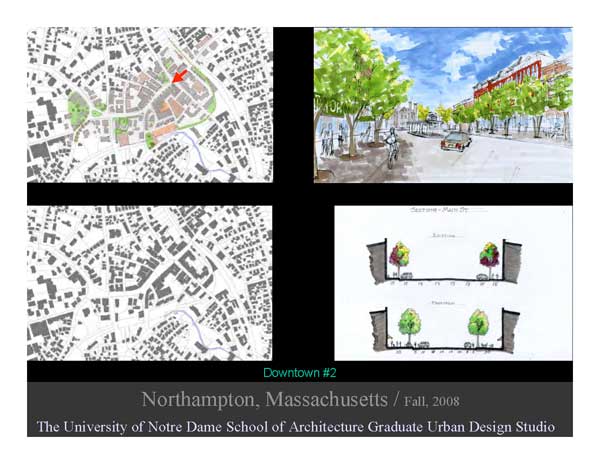
A more solid and coherent line of buildings along the street is suggested for Florence Center, along with pockets of greenspace:
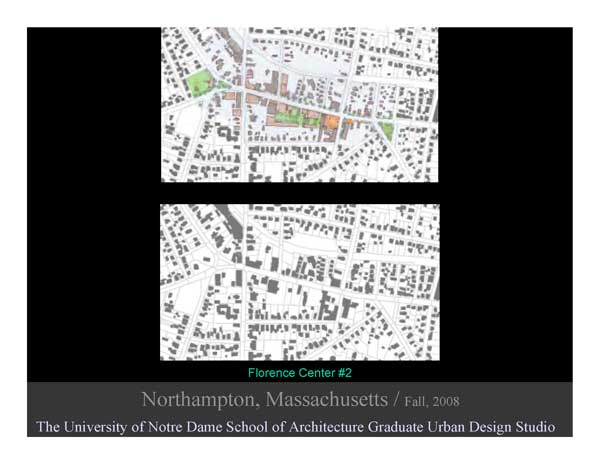
Buildings along the street line are also proposed for Pleasant and Conz Streets…
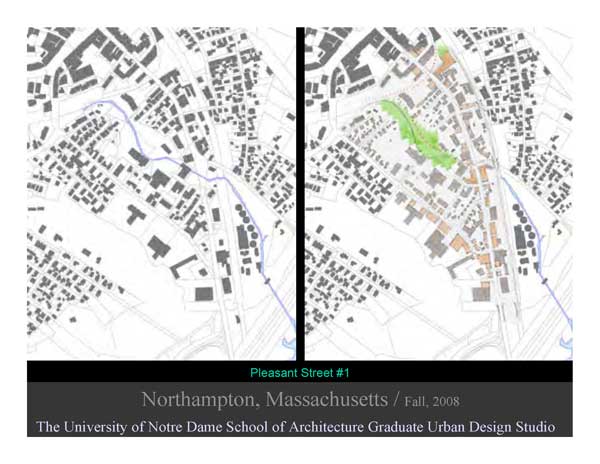
…and King Street:
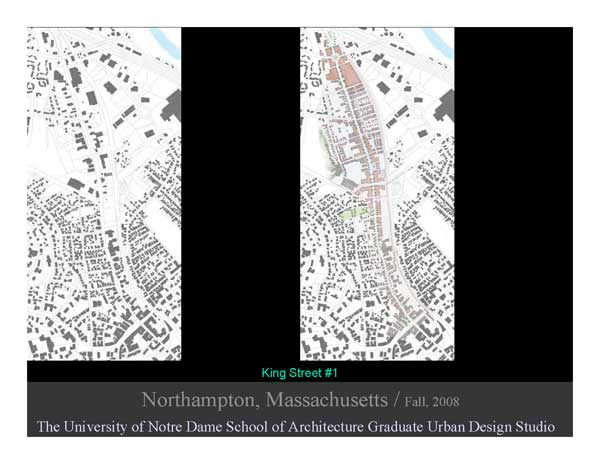
Here is how King Street looks today in the area around Stop & Shop (bottom panel), and how it could look (top panel):
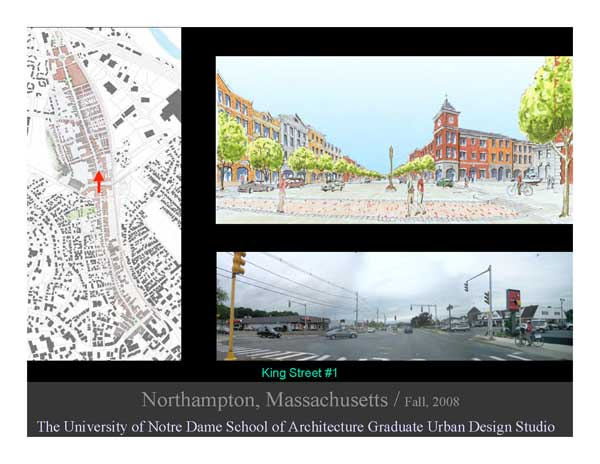
The once (and future?) trolley system of Northampton:
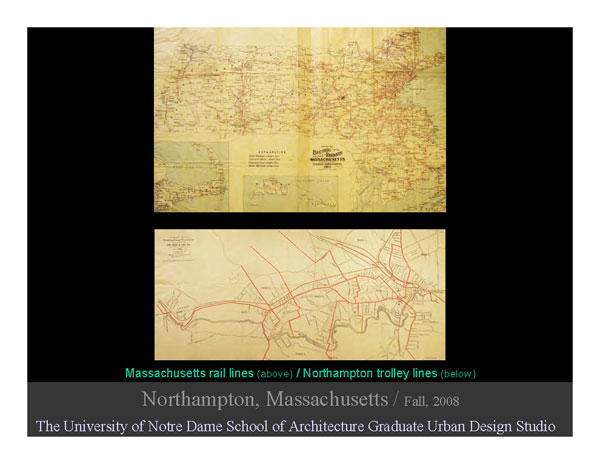
The pleasing appearance of the northern portion of Pleasant Street–built before 1950–is contrasted with southern Pleasant Street:
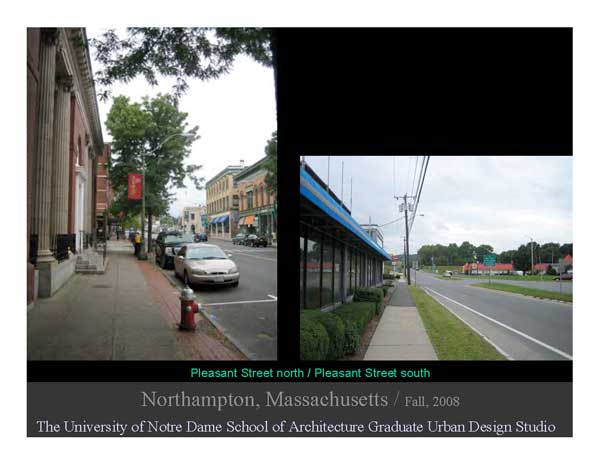
An old court house is contrasted with a new one:
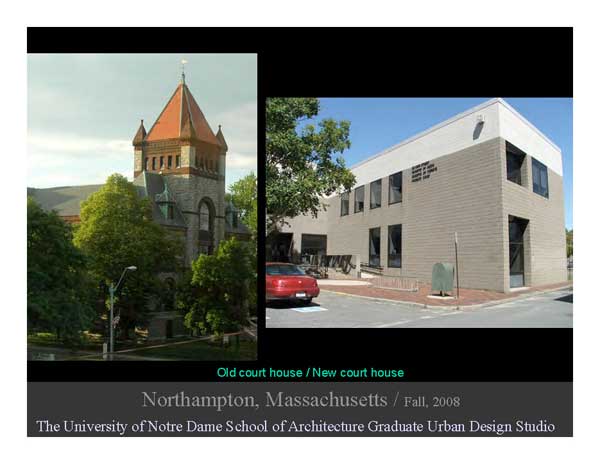
The old Post Office is contrasted with the new one:
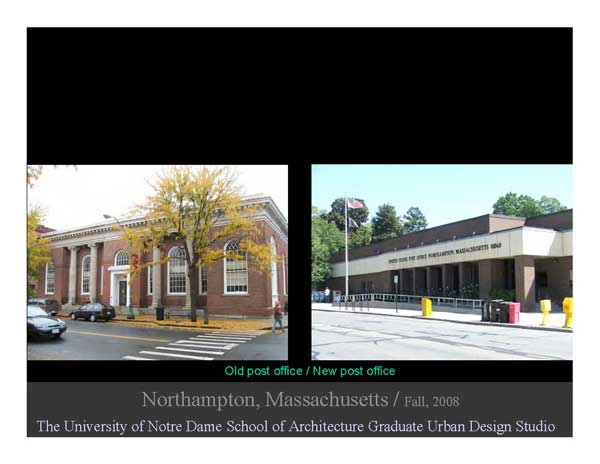
The old jail is contrasted with the more recent police station:
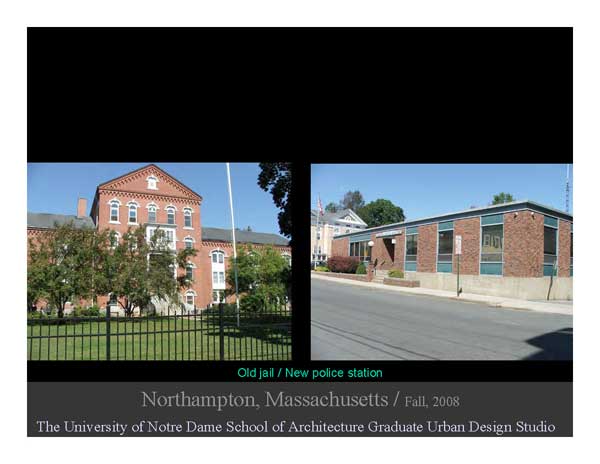
Ideas for affordable traditional urban housing:
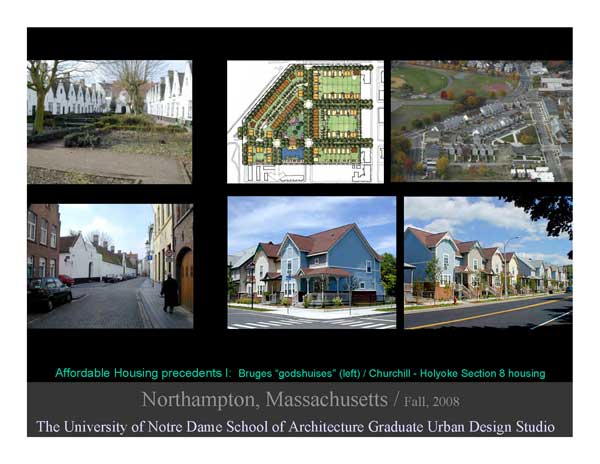
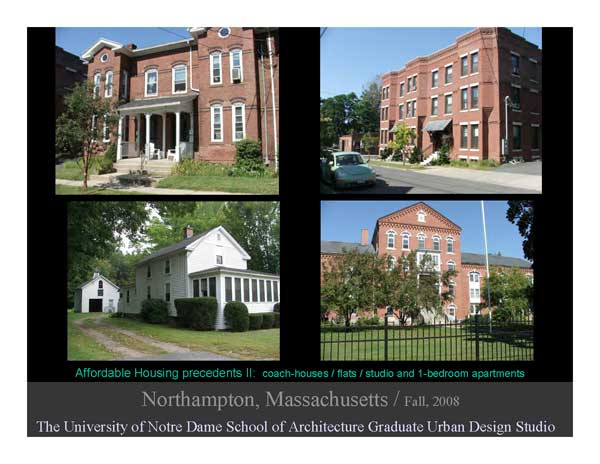
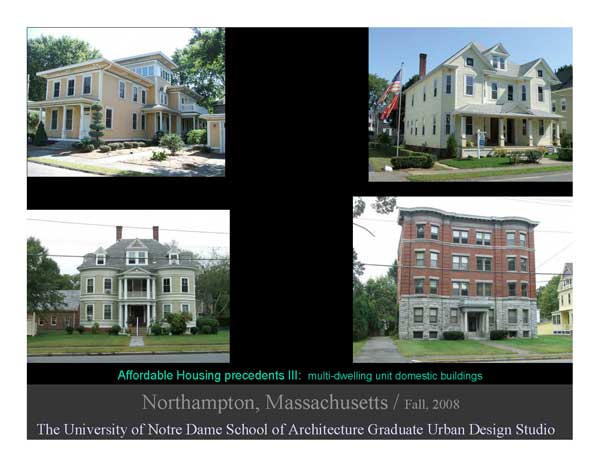
See also:
Gazette: “Visiting planners envision future for Northampton” (9/15/08)
A delegation from Northampton is slated to travel to South Bend in October for a mid-semester review of the students’ work. The students and Professor Philip Bess will return to Northampton in December, when they will offer more specific recommendations to guide Northampton development over the next 50 to 100 years…
In the meantime, Saturday’s presentation offered the 125 people attending a glimpse into the team’s thinking, the central principle of which is that the modern growth phenomenon known as sprawl is not good for anyone or any city.
Gazette: “A long-term look at city’s design: Students focus on Northampton as multiple centers” (9/12/08)
The
most logical place to put compact growth in practice is at
intersections of major streets that would serve as the center of
neighborhoods, Bess said…
Video: First public “in-process” presentation and feedback session for Design Northampton Week
Fran Volkmann, Vice Chair, Community Preservation Committee
1:09:26-1:10:57
We would like to concentrate development closer in, we like the idea of
walkability, bikeability, neighborhood center… The thing that happens
to us, however, is that we buy that and then somebody builds some
horrible thing…and then they say to you, “This is infill, you know.
It’s good, it’s infill.” …You know if you walk in European cities,
you very often find little tiny pocket parks, and little bits of green
spaces, mixed in with beautiful buildings… How do we…learn
to…value…respect for people at the same time that we try to fill in
our park spaces?

Video: Second public “in-process” presentation and feedback session for Design Northampton Week
Video: Third public “in-process” presentation and feedback session for Design Northampton Week
Video: Fourth public “in-process” presentation and feedback session for Design Northampton Week
Video: Design Northampton Week Opening Presentation
Design Northampton Week: Full Schedule and Handout from Opening Presentation
This handout provided by Notre Dame (PDF)
includes “Ten Characteristics of Good Traditional Towns and
Neighborhoods”, “What’s Wrong With Sprawl?”, “The Rural-to-Urban
Transect”, “What Is a Charrette?”, “Charter of the New Urbanism”, and
“The Asphalt Rebellion: Vibrant and beautiful, not fast and ugly”.
Complete Slides from Northampton Design Week Opening Presentation
Video: Notre Dame Urban Design Studio Presentation
Notre Dame Pitches Urban Design Studio to Northampton
Proposed Design for New Police Station and Video Presentation
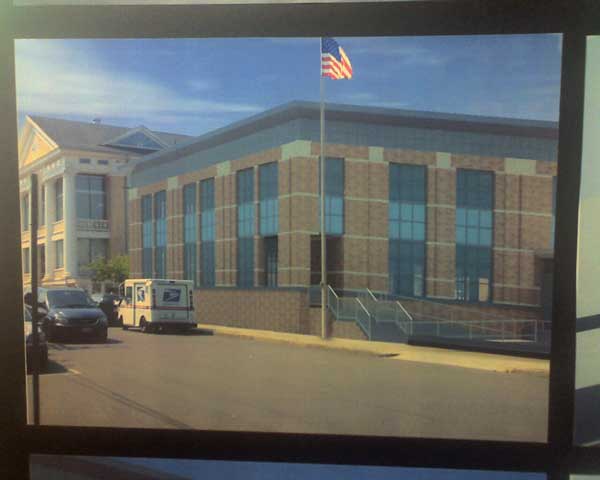
Valley Advocate: Northampton: No “Village” at Hospital Hill (6/12/08)
Today’s Urban Planning Debates Echoed in Northampton’s Near Past
Rutherford Platt in Gazette: Avoid Overplanning (9/7/08)
Grasping the Sustainable Northampton Vision: We Need Pictures
In all the 78 pages of the draft Sustainable Northampton Plan
(PDF), there is only a single graphic. It’s the Future Land Use Map, an
abstract, top-level view of the city. That’s unfortunate, because
without drawings, pictures and illustrations, it’s difficult to
envision how the Plan will change the look and feel of
Northampton. James Kunstler, an advocate of New Urbanism, discusses
this problem in “Home From Nowhere”, published in the September 1996 issue of The Atlantic Monthly:
The object of the charette [public design workshop] is not,
however, to produce verbiage but to produce results on paper in the
form of drawings and plans. This highlights an essential difference
between zoning codes and traditional town planning based on civic art.
Zoning codes are invariably twenty-seven-inch-high stacks of numbers
and legalistic language that few people other than technical
specialists understand. Because this is so, local zoning- and
planning-board members frequently don’t understand their own zoning
laws. Zoning has great advantages for specialists, namely lawyers and
traffic engineers, in that they profit financially by being the
arbiters of the regulations, or benefit professionally by being able to
impose their special technical needs (say, for cars) over the needs of
citizens — without the public’s being involved in their decisions.Traditional
town planning produces pictorial codes that any normal citizen can
comprehend. This is democratic and ethical as well as practical. It
elevates the quality of the public discussion about development. People
can see what they’re talking about. Such codes show a desired outcome
at the same time that they depict formal specifications. They’re much
more useful than the reams of balderdash found in zoning codes.
Tailoring Infill and the New Urbanism to Northampton
The North Street Neighborhood Association is not opposed to all infill
per se. The “new urbanism” has many appealing features, but three
cautions come to mind.
First, due to Northampton’s chronic
flooding issues, the proportion of impervious surface in a neighborhood
should be closely monitored. A front lawn may not be as “useless” as it
looks, and it can add privacy and quiet to a home. Second, urban heat
island effects should be considered if a neighborhood is at risk of
losing greenspace. Third, any transition from one zoning regime to
another should be gradual, to avoid sudden property tax increases and
to evaluate the effects of the new regime as they unfold, in case
adjustments are needed.
New York Times: “Report Says Public Outreach, Done Right, Aids Policymaking” (8/22/08)
…a growing body of evidence suggests that [public participation],
done correctly, can improve [environmental] policies and smooth their
implementation, according to a report [link] issued Friday by an expert panel
convened by the National Research Council.
Though critics often assert that members of the public are too ignorant
to weigh the science involved in environmental policies, “public
participation can help get the science right and get the right
science,” said Thomas Dietz, the director of the Environmental Science
and Policy Program at Michigan State University, who headed the panel.
“A lot of science has to be applied to a very local context,” he said in a telephone interview. “Local knowledge is essential.”